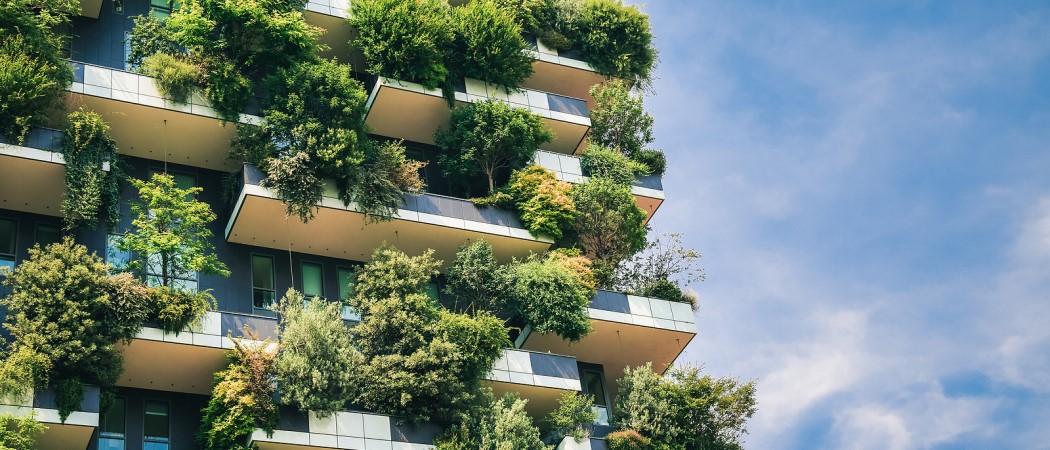Green architecture project aims to bring art and science together to improve energy efficiency in Europe’s buildings. But MEPs question the need for ‘European Bauhaus' at a time when the priority should be helping the cultural sector recover from COVID-19 shutdown

MEPs doubt that Europe needs a New European Bauhaus, a top-down science and culture project, at a time when the EU budget has been significantly reduced and the cultural sector is in crisis.
“I have to say, I’m not fully convinced by what you’ve said so far. I haven’t seen the added value of this kind of initiative yet or how much it is going to cost,” said MEP Petra Kammerevert from the S&D group, addressing EU research commissioner Mariya Gabriel at a Culture Committee meeting on Tuesday.
The New European Bauhaus, an EU project modelled after the German grassroots art and crafts movement, has plans to create a forum and a laboratory where architects, artists, scientists and entrepreneurs can collaborate. Its goal is to turn Europe’s proposed green building renovation programme into a cultural movement.
“This new European Bauhaus is a type of bridge between science and technology to the world of art and culture,” EU research commissioner, Mariya Gabriel, told MEPs on Tuesday. “The fight against climate change and the need to protect our cultural heritage means we need to change our lifestyle, but we need to be innovative in our approach.”
But parts of the commissioner’s argument for a second wave of the Bauhaus movement did not convince many MEPs. “Today, we live in post-industrial societies. Challenges are different. We need less consumption, not more production,” said MEP and former Latvian culture minister, Dace Melbarde.
The idea of an EU dictated top-down approach to art also did not sit well with the parliament. “The EU should promote culture and art in their free creation,” said MEP Michaela Sojdrova. It must support culture financially, “but we cannot tell creators how to create.”
The president of the European Commission, Ursula von der Leyen, first announced the new European Bauhaus in her state of the union address in September, but said little about how it will look in practice.
On Tuesday, Gabriel told MEPs the commission plans to ask architects, artists, scientists, innovators to identify what kind of projects should be part of the movement by next summer.
In the second half of 2021, it will launch a call for projects. Then, from 2022, the European Bauhaus will be disseminated across Europe, starting with five founding Bauhauses working on different topics, such as social cohesion or energy efficiency.
Kammerevert said that funding all this through the Creative Europe programme is off the table. With the creative sector in crisis due to the COVID-19-induced shutdown, the funds must be dedicated to saving the sector. “All the other initiatives you come up with should perhaps be put on the back burner because it is very difficult to deal with member states regarding money and finances” she said.
Another MEP, Domènec Ruiz Devesa, who highlighted many positive aspects in the initiative, such as the link to the green deal, fostering EU values and a focus on co-creation, said that using the pandemic recovery fund is a good option, however, that money is also needed to rescue the cultural sector.*
Gabriel promised Creative Europe will be reserved for existing initiatives, and said regional funds, which have money allocated to artists and engineer innovator networking, could provide the answer. “These are routes and paths we can explore,” she said.
The EU’s research programme, Horizon Europe, will also play a role in the new Bauhaus movement. Gabriel hopes the first five Bauhauses could be part of the Horizon Europe smart cities mission, which aims to create 100 climate neutral cities in Europe by 2030.
The renovation wave
The New European Bauhaus is the cultural component of the EU building renovation strategy, which is set to improve energy efficiency in Europe’s buildings and double the rate of renovation in the next ten years.
Buildings are responsible for about 40 per cent of the EU's energy consumption, and 36 per cent of greenhouse gas emissions from energy. But with only 1 per cent of buildings undergoing energy efficient renovation every year, action is crucial to making Europe climate neutral by 2050.
The strategy, announced by the commission a few weeks ago, lists several research avenues, including a public-private partnership, Built4People, covering all aspects of construction.
The commission will also launch separate research calls under Horizon Europe and the cities mission. Researchers will be required to show how their work can be applied in different environments by setting up demonstration projects in all different climate areas in Europe.
All of this will be funded mainly by the Horizon Europe budget and also the recovery fund.
The planning for the Bauhaus initiative is currently in the hands of the commission’s Joint Research Centre.
* Editor's note: The story was updated on 30 October 2020 to reflect an inadvertent mischaracterisation of the comment made by Domènec Ruiz Devesa.





 A unique international forum for public research organisations and companies to connect their external engagement with strategic interests around their R&D system.
A unique international forum for public research organisations and companies to connect their external engagement with strategic interests around their R&D system.